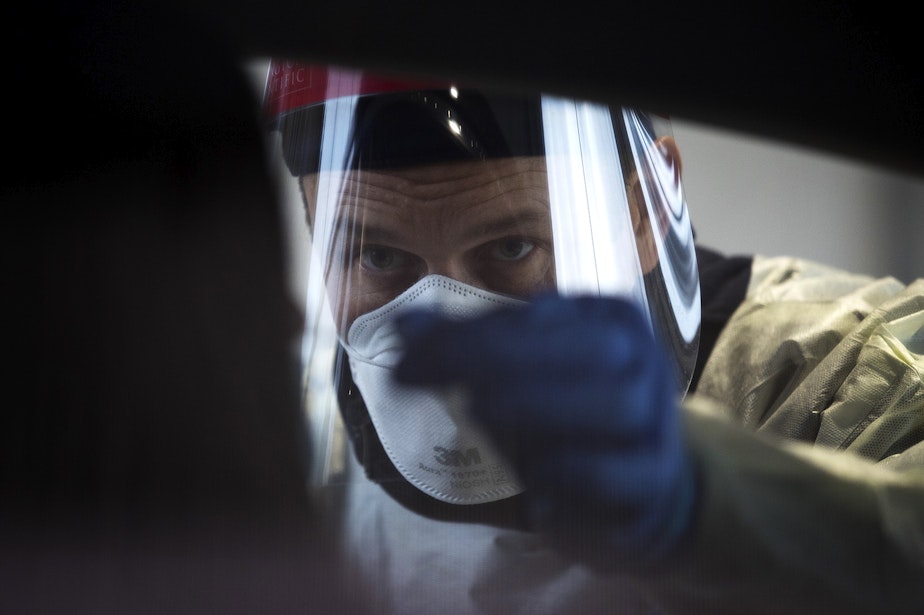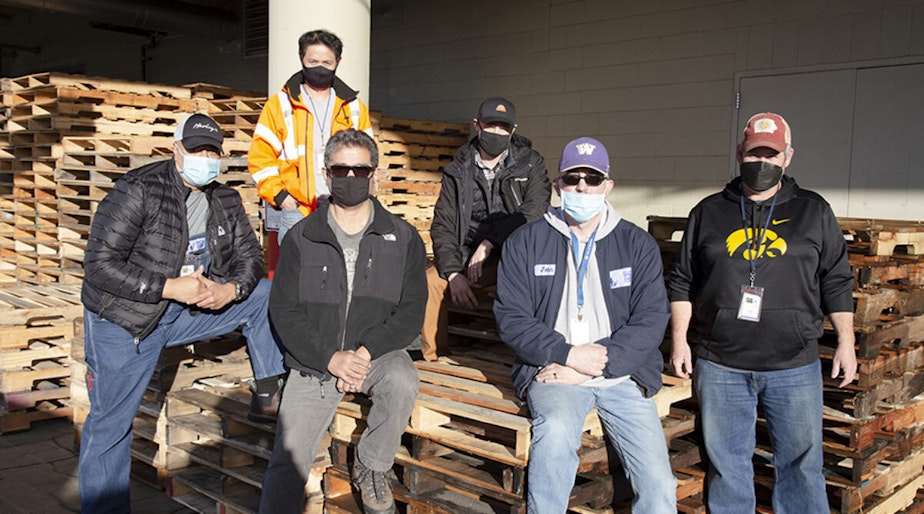Omicron's stealthy subvariant: Today So Far

- BA.2, aka "Stealth Omicron," shows up in Washington state.
- What about stagnant air and hanging outside amid the pandemic?
This post originally appeared in KUOW's Today So Far newsletter for Jan. 25, 2022.
If you thought that "Omicron" was a menacing sounding name for a coronavirus variant (I did), then get ready for "stealth Omicron." I don't know who is coming up with these names, but they need to lay off a bit. Since someone had to add a scary adjective onto this variant, let's talk about what we know so far.
Let's get this out of the way: "At first glance, it appears that it's not causing worse disease than the original Omicron variant..."
That was stated by Dr. George Diaz, an infectious disease specialist with Providence Medical Center, who spoke at a Washington State Hospital Association briefing this morning. Little else is known so far. Though, in the meantime, Pfizer has begun testing an Omicron-specific vaccine.
Stealth Omicron, aka the BA.2 variant, is a subvariant of Omicron, which has caused our current wave. Washington's Department of Health has now found two such cases in the state through genomic sequencing. This subvariant seems to go undetected by some PCR tests, hence the nickname "stealth." But here's the thing: it's not entirely "stealth," because we know about it. About 100 cases have been detected in the U.S. so far.
Moving on. If you feel that the air has been a little funky recently, it’s most likely you. To be more accurate — it’s us. Our region has been under a stagnant air advisory that is slated to last through tomorrow. Basically, no wind is blowing away our wood smoke, pollution, emissions, etc. Checking our local air monitors, there's only a few areas around Seattle that dropped from "good" to "moderate" quality this morning. But I (and some curious KUOW minds) was wondering what this meant in terms of the pandemic. Are outdoor environments still safer when the air is stagnant?
Sponsored
Personally, my wife Nina and I have become familiar with Seattle-area establishments with patios. And better yet — patios with heaters. It's a big factor in our pandemic decision-making process. And it's the reason we trek across town to the Fremont Coffee Company — great heated porch. I'd love to hear about your favorite patio hot spots in the area.
So I checked in with Public Health — Seattle & King County and the state DOH about the stagnant air and Covid. They didn't have an exact answer for this. But in short, gathering indoors is still, generally, the worst environment when it comes to spreading the virus. Outdoors is still, generally, better. There have also been studies at sports events that look into how well Omicron spreads outdoors, which covers some of this. Read more about that here.
But another thing to keep in mind. People who are sensitive to lower outdoor air quality could also have underlying health conditions that make Covid more of a risk. All that should go into an equation for hanging out.
One last thing. I'd like to remind us all that before the virus was a concern, people wore these N95 / KN95 masks because of poor air quality, like wildfire smoke. So if you're concerned about outdoor air quality, it's just another reason to put on that N95.
Have a comment or want to reach out to me? Send me an email at dyer@kuow.org.
Sponsored
AS SEEN ON KUOW

Getting Covid test kits can be challenging these days. But driving for hours across the state over icy roads, after a massive snow storm, just to pick up some tests — that is extra challenging. But it was a challenge that a handful of warehouse workers with Seattle Public Schools were up to. They braved the roads to get 60,000 test kits in Kalama, Wash. to bring back to Seattle so students and staff could be tested when they came back from winter break.
DID YOU KNOW
Washingtonians are Googling "potholes" a lot these days.
QuoteWizard recently looked through Google search data and found that online inquiries about potholes have increased 72% over the past 30 days in Washington state. I looked into the Google trends, too. And while we recently have had a fair share of searches, it's not our highest level of interest. Washington was far more interested in potholes in May 2021. I'm guessing the recent ice that tore up our roads has prompted the current intrigue. And overall, Seattle is the third most interested region in potholes. Spokane and Yakima have been looking up potholes more than us.
Just a reminder, if you live in Seattle, you can report a pothole to SDOT for fixing. There's also an app for this. In 2021, SDOT repaired 14,000 potholes across the city. What else don't we know?
Email us at hello@kuow.org.

